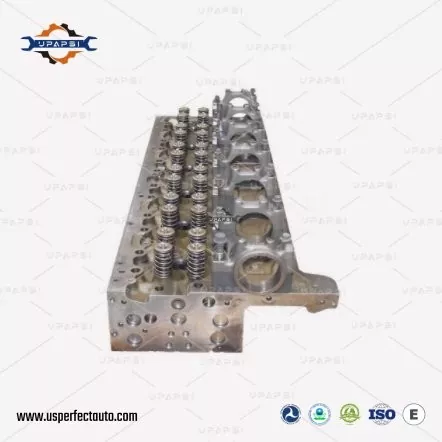Cylinder Head Valve Oil Seal Replacement Cycle
2025-06-20
The cylinder head valve oil seal is a crucial component within an internal combustion engine. Positioned around the valve stem, it controls the lubrication of the valve system by preventing excessive engine oil from entering the combustion chamber. Over time, due to wear, heat, and material degradation, these seals can fail—leading to oil consumption issues, smoke emissions, and diminished engine performance. Understanding the replacement cycle of valve oil seals is essential for maintaining engine health and longevity.
Function and Importance
Valve oil seals serve a dual purpose: they retain the oil needed to lubricate the valve stem and guide while preventing oil from seeping into the combustion chamber. This balance ensures that the engine runs efficiently without burning excess oil or emitting blue smoke from the exhaust. When these seals wear out, oil leakage becomes a common issue, potentially leading to carbon buildup, misfires, and damage to the catalytic converter.
Signs of Worn Valve Oil Seals
Recognizing the symptoms of failing valve seals helps in timely maintenance. Common signs include:
Blue smoke from the exhaust, especially on cold starts or during deceleration.
Increased oil consumption without visible leaks.
Fouled spark plugs due to oil residue.
Reduced engine performance and rough idling.
When these symptoms appear, it is usually a signal that the valve oil seals have reached the end of their service life.

Replacement Cycle
Unlike oil filters or spark plugs, valve oil seals do not have a fixed mileage-based replacement interval because their lifespan depends on several variables. Factors influencing the replacement cycle include:
Engine operating temperature: High heat accelerates seal degradation.
Oil quality and maintenance frequency: Poor-quality oil or infrequent changes can cause sludge that damages seals.
Driving conditions: Frequent short trips or stop-and-go traffic can increase engine wear.
On average, valve oil seals can last anywhere from 100,000 to 150,000 kilometers (62,000 to 93,000 miles) under normal driving conditions. However, in high-performance or older engines, replacement may be required sooner.
Maintenance Recommendations
To extend the life of valve oil seals, regular maintenance is key. This includes:
Using high-quality engine oil and changing it at recommended intervals.
Avoiding engine overheating by maintaining the cooling system.
Periodically inspecting valve components during top-end engine servicing.
If valve seals need replacement, it's advisable to replace them during other major head work, such as a timing belt replacement or valve adjustment, to save on labor costs.
Conclusion
Cylinder head valve oil seals are vital for efficient engine operation and environmental compliance. Though they don’t require frequent replacement, monitoring their condition and replacing them when necessary can prevent serious engine issues and costly repairs. A proactive approach to engine maintenance ensures a longer service life and better performance from your vehicle.
As a professional manufacturer and supplier, we provide high-quality products. If you are interested in our products or have any questions, please feel free to contact us.


